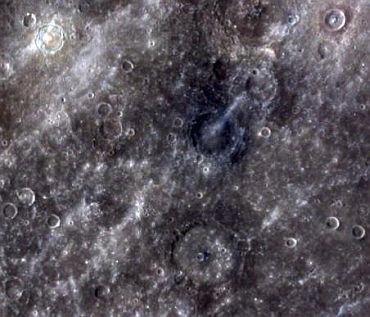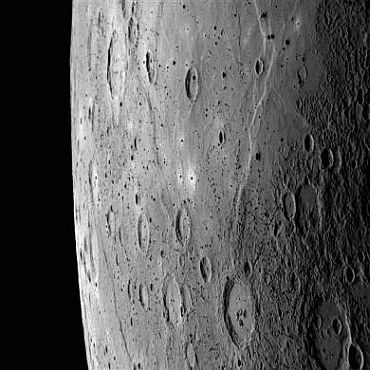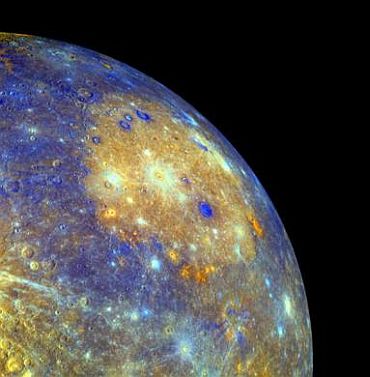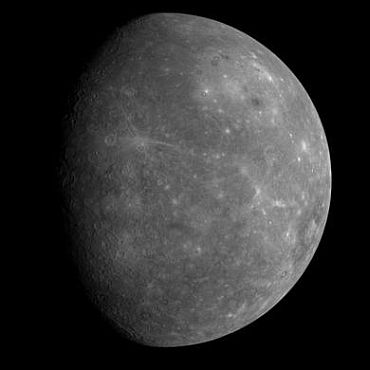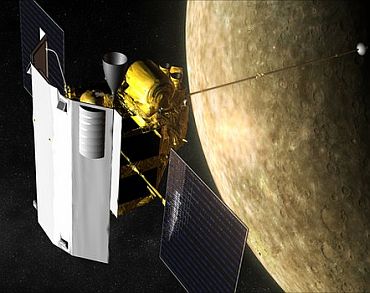 | « Back to article | Print this article |
Messenger sends PHOTOS from Mercury
NASA's Messenger spacecraft, the first ever to enter the orbit of Mercury, has fetched its first photo, the project's website said.
The image, the first ever obtained from a spacecraft in orbit around Mercury, was taken as the spacecraft sailed high above the planet's South Pole.
It features portions of Mercury's surface not previously seen by spacecraft.
Click on NEXT to see more PHOTOS ...
Mercury from Messenger
"The first images from orbit and the first measurements from Messenger's other payload instruments are only the opening trickle of the flood of new information that we can expect over the coming year," the website quoted Messenger Principal Investigator Sean Solomon as saying.
"The orbital exploration of the Solar System's innermost planet has begun."
Mercury from Messenger
The image was acquired as engineers checked how the spacecraft's systems are sustaining Mercury's harsh thermal environment after all equipment was turned on March 23.
The scientific mission will begin on April 4.
Mercury from Messenger
"Instrument checkout has been proceeding according to plan," the scientist said.
It took the spacecraft more than six years to enter the orbit of Mercury, the least explored terrestrial planet of the inner Solar system.
To reach its destination point, the spacecraft, launched in 2004, covered more than 7.8 billion km.
It followed a complicated route through the inner solar system, which included one flyby of Earth, two flybys of Venus, and three flybys of Mercury.
Mercury from Messenger
Mercury is the smallest and the densest planet among the four terrestrial planets.
It also has the oldest surface and the largest daily variations in surface temperature.
Mercury from Messenger
Before the Messenger mission, only 45 per cent of the surface of Mercury had been photographed by a spacecraft.
The previous mission was Mariner-10, launched in the 1970s.
Mercury from Messenger
The spacecraft was launched in August 2004.
Over the past six and half years, the probe has taken a circuitous, 4.9 billion-mile, or 7.9 billion-km, route through the inner solar system, completing one flyby of Earth, two flybys of Venus and three flybys of Mercury in the process.
Mercury from Messenger
According to the researchers, the spacecraft's science mission will last just two Mercury days, which is equivalent of a year on Earth.
Mercury rotates on its axis just once every 176 Earth days.
During the mission, the scientists hope the probe will help them understand better about the planet's core structure, its geologic history, its atmosphere among others.

